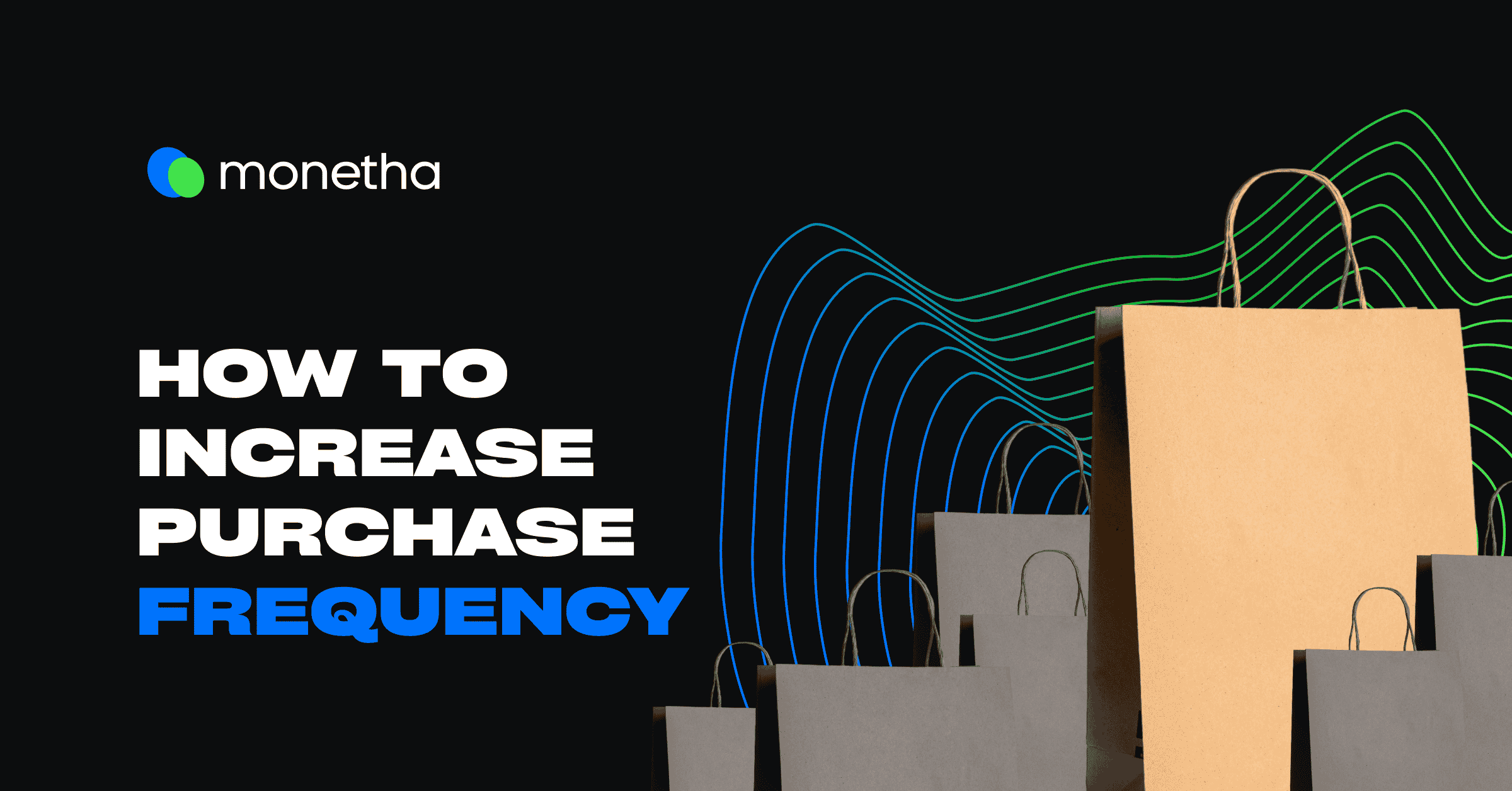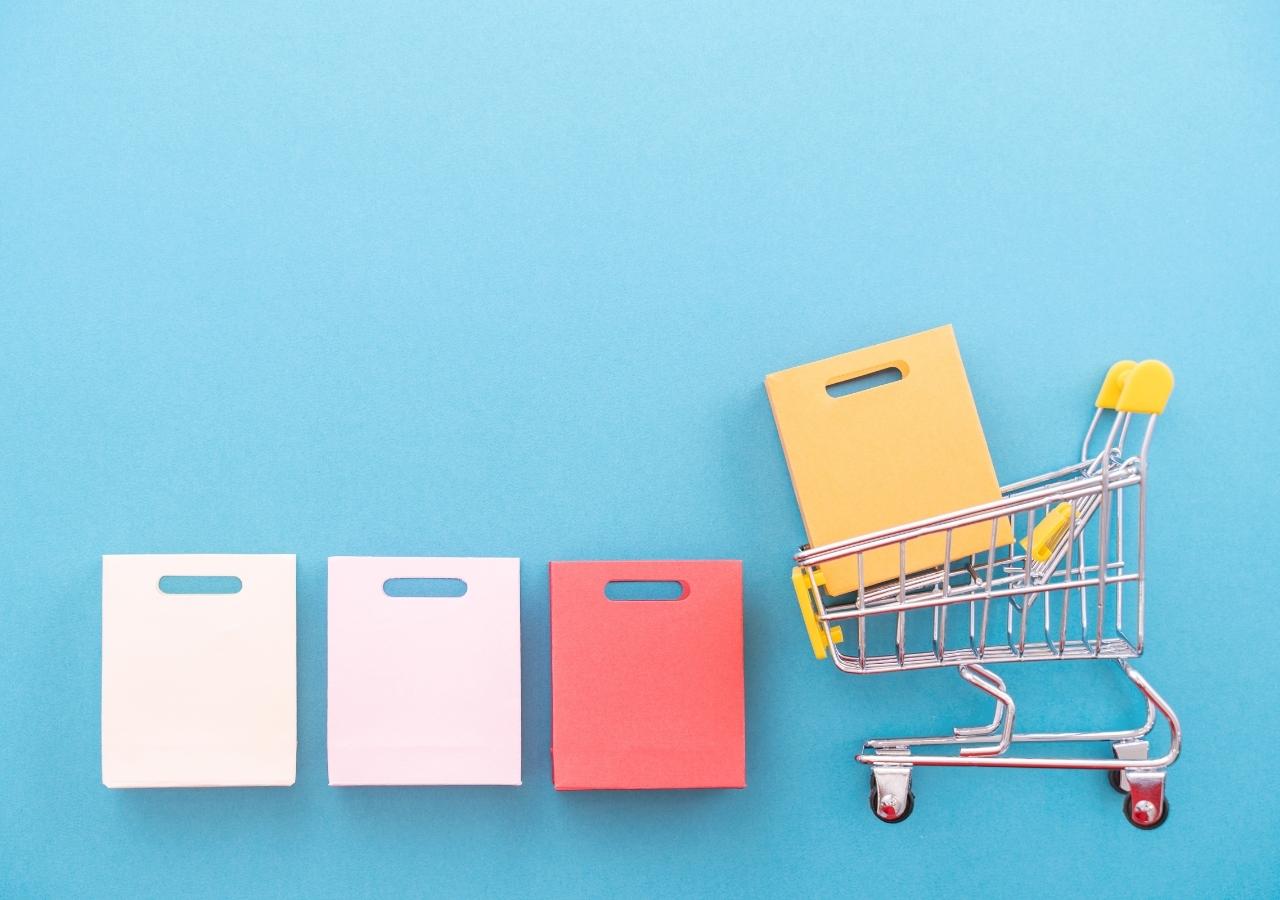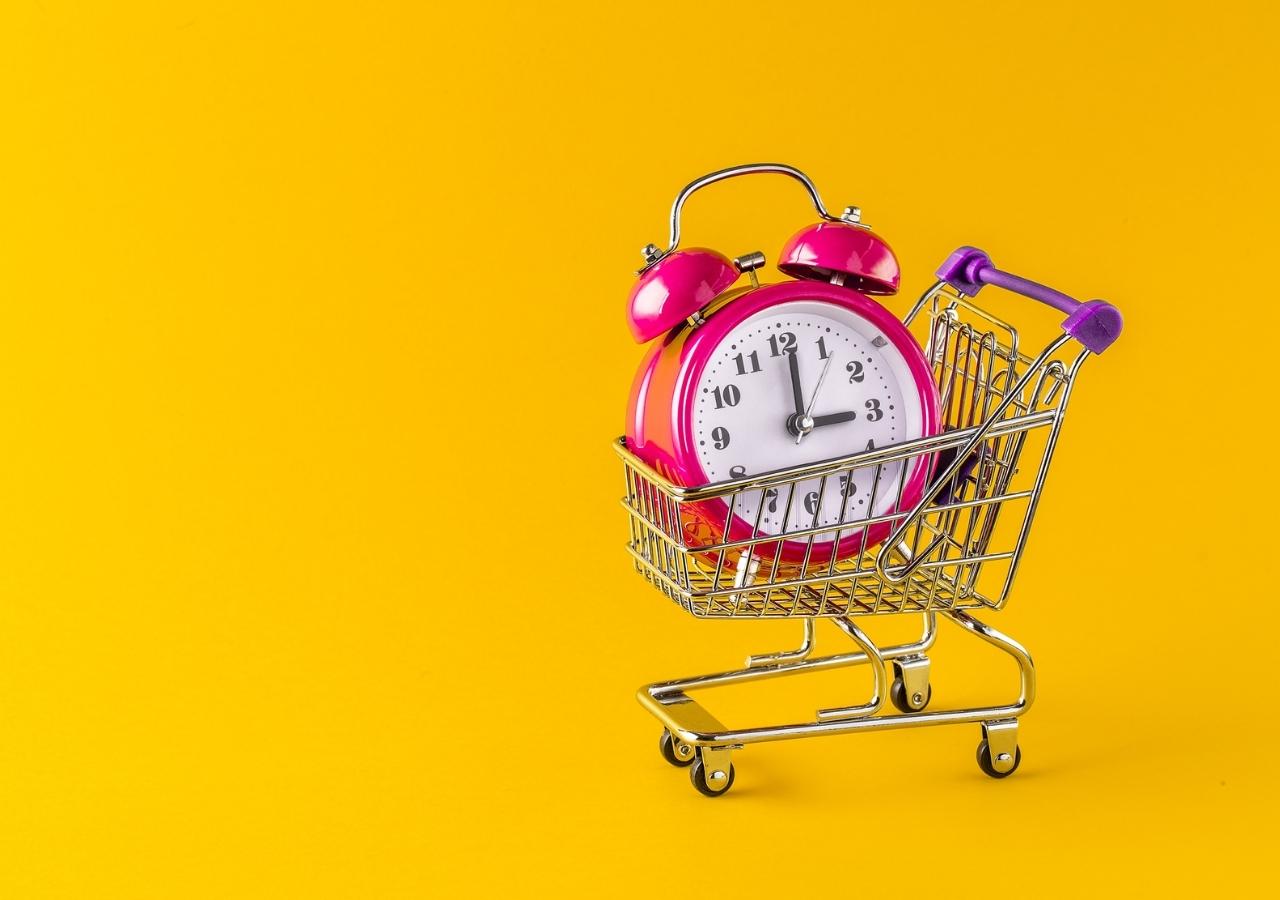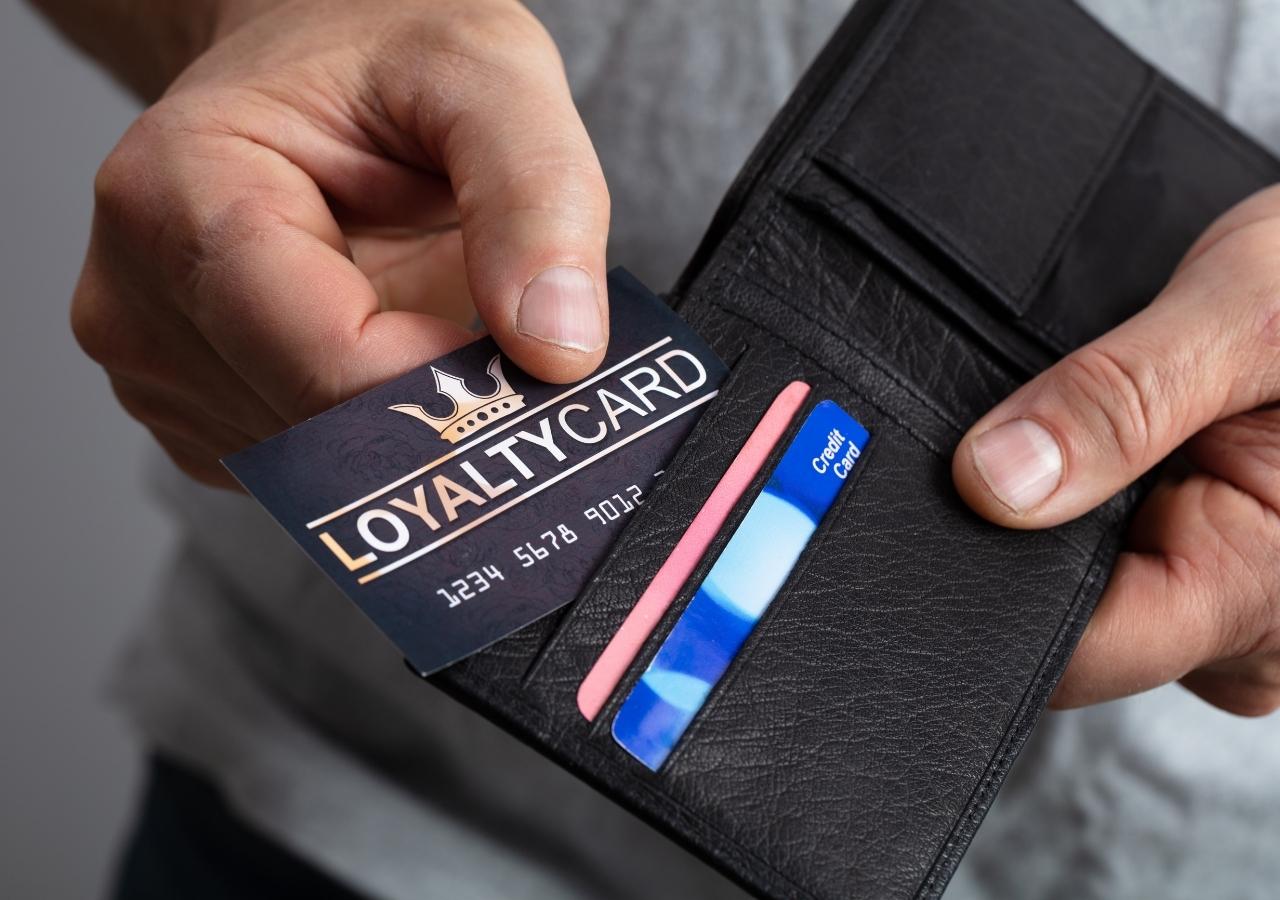Based on recent statistics, 41% of US consumers make an online purchase once or twice per week. 24% buy something every other week. Your task as a business is to ensure you are among those they buy from and do it often.
Purchase frequency is one of the core metrics every business should track. It directly affects your profitability and revenue since you are 6X times more likely to sell to existing customers than new ones. High or average frequency of purchase means customer loyalty, while low rates show that people rarely return after the first purchase.
Find out how to calculate and increase your PF below. Our tips will help you boost your customer retention management and results.
What is Purchase Frequency (PF)?
The purchase frequency (also PF) is the number of times an average customer places an order within a time period. By measuring PF during the limited time frame you get more accurate results and can compare customer behavior changes.
The higher the PF, the more likely your is brand to turn repeat buyers into loyal ones. For example, people buy low-cost consumables more often than luxury cars or accessories with a significantly higher average order value. The frequency of purchase for these product categories cannot be compared. Hence, you should track average customer purchases within your company or use industry benchmarks for estimates.
Why is It Important?
Purchase frequency over a given period is one of the critical indicators for any eCommerce store. But why is it so important? Here are the main reasons for calculating it:
-
It allows you to track customer retention (there are tools that can help you with that). When a customer buys from you repeatedly, you work in the right direction. Without the purchase frequency KPI, you won’t be able to measure this.
-
It boosts the customer lifetime value. When you increase PF, the customer lifetime value also grows since an average buyer generates more revenue and stays for a longer time frame.
-
Repeat purchases are cheaper than customer acquisition. The cost of activating existing customers is much lower than attracting unique customers, which may considerably cut your expenses. 82% of companies agree that customer retention is cheaper than acquisition (learn about other customer retention benefits here).
-
Loyal customers with a large average number of orders are more likely to recommend your brand. People that have completed multiple purchases favor your brand and are ready to invite a friend or join a loyalty program.
-
It provides reliable data for marketing campaigns. If you are unsure whether your marketing is fruitful, purchase frequency rates help evaluate this.
As you can see, you get more loyal customers, boost sales, and grow revenue when you increase rates. It’s a must-watch metric for any retailer.
How to Calculate It
All data you need for calculations is in your transactional data. The formula to calculate it is also pretty easy to use.
You will need to follow these steps:
-
Learn the number of orders customers placed with your company during the selected time frame (usually 12 months).
-
Learn the number of unique customers your business served during the same time frame.
-
Use the gathered information in the purchase frequency formula for calculation.
Purchase Frequency = Number of Orders / Number of Unique Customers
Example
Suppose you run a business that sells clothes and want to check the purchase frequency. Based on the previously collected statistics, you know that your company had 2500 unique customers and 3300 orders for the same period.
Then, the purchase frequency is 3300/2500 = 1.32.
Difference Between PF and Repeat Purchase Rates (RPR)
Many people use the terms purchase frequency and repeat purchase rate interchangeably. Yet these metrics have some significant differences, so it’s necessary to differentiate them for the clarity of this article.
The PF rate shows how often an average customer buys something from a single merchant within the specified time frame. On the other hand, the repeat purchase rate is a share of customers who have purchased at least a second time. To calculate repeat purchase rate, you need to divide the number of customers who’ve purchased more than once by the total number of customers.
While PF allows you to understand how often consumers buy something, the repeat purchase rate focuses on the share of repeat customers. Both these metrics are helpful to evaluate customer retention and loyalty.
8 Ways to Increase Purchase Frequency
If you want to have a flourishing business, you should engage new customers and continuously nurture existing ones. Repeat customers generate more revenue than occasional purchasers. Hence, you must put more focus on them if you expect to grow sales.
This section includes several most effective ways to increase your frequency of purchase by building better customer relationships and more relevant offers.
1. Know your customer before planning marketing campaigns
Before you take steps to promote or sell something, you need to know who you target. This information will allow you to choose the best ways to encourage customers to repeat purchases. You will also be able to focus on people who are more likely to convert than others.
Advanced software is an optimum way to collect details about your target audience (including demographics, purchase history, average order value, preferences, favorite communication channels, etc.). Modern CRM systems integrated with email marketing tools, social media, data analytics, and other solutions automatically record priceless information about customers. They process this raw data to generate insights about what people want and whether they are ready to pay.
Once you have these details, it’s possible to segment your customers based on their characteristics. This way, you will tailor your marketing and increase frequent purchases.
2. Launch personalized email marketing campaigns
Email marketing is the cornerstone of a marketing strategy focused on increasing the number of customers who make repeat purchases. Emails are the most convenient and standard way to communicate with customers about their purchases, special offers, or sales. These communications remind people about your brand to encourage customers to buy something again.
Yet to boost the efficiency of email marketing campaigns, you’d better make them personalized. Using the person’s name in an email subject line can increase open rates by 26%. When more customers open your message, customer activity grows, increasing purchase frequency.
Besides the person’s name, you can customize the content and style of emails based on the recipient’s characteristics, previous responses, purchases, and other details. For example, you can send a custom selection of similar products based on the purchase history.
3. Make limited-time special offers
Limited-time offers are steroids for any marketing campaign that considerably affect customers’ behavior. When the person hears that the chance to get something at a lower price will disappear after the set time frame, they rush to take action. As a result, the customer buys a product or service they haven’t planned to purchase before as the offer seems too good to miss it. Such customer behavior increases the frequency of purchase and revenue.
Yet you should be careful and avoid overusing limited-time offers. Consumers will get used to such a customer experience and stop buying without discount codes or sales. It may be counterproductive for the overall purchase rate.
4. Communicate with existing customers through multiple channels
Over 50% of modern brands use at least 8 channels to interact with customers. You should be ready to serve consumers through emails, social media, messengers, phone calls, online chats, etc. The ability to stay in touch through top popular communication channels directly affects the quality of customer service and satisfaction rates.
Imagine users find your new product and are ready to place an order, but you don’t reply to their emails for several days. Guess what? The chances they will leave to a competitor are very high.
You should avoid such issues and provide continuous support via the main communication channels. To make things clear from the start, indicate what channels consumers should use for help on your website.
5. Implement a loyalty program
The best customers are loyal customers. They already love your brand, trust you, and make frequent purchases even without you asking them about this. 60% of loyal customers say they are ready to purchase from their favorite companies more often.
That’s why you should think about having a customer loyalty program. Offer buyers points for every purchase, give them discounts or make special offers, or find any other incentive that can inspire people to join your loyalty program.
Not sure how to implement loyalty programs? Join Monetha to get a ready solution for eCommerce loyalty campaigns.
6. Use software to automate manual sales and support tasks
As the PF grows, the volume of orders you need to process also skyrockets. It may turn out that your sales and support teams are not ready to meet the demand.
Therefore, to increase the productivity of your sales and support teams, you need automation software. Modern tools can automatically respond to standard emails, implement online website chats, track order fulfillment, update order statuses, and complete many other actions you would otherwise do manually.
It reduces the load on sales and support departments allowing them to enhance customer service and focus on strategic tasks.
7. Introduce gamification elements
When a customer purchases a product, it should be a fun and pleasant experience. Therefore, gamification elements in your sales strategy are a great way to stir buyers’ interest and increase purchase frequency.
Gamification is the most relevant in loyalty campaigns where users can win points, move from one level to another, or even compete with peers. When people get engaged and want to reach the highest level, they willingly do what you ask them to do. For example, when a buyer needs ten orders to move from the starter level and enjoy additional benefits, they are more likely to place ten orders than without incentives.
8. Fight cart abandonment
Abandoned carts are among the most upsetting types of customer behavior for businesses. People browse your website, select products, add them to the cart, and leave at the last moment without paying. Given that the average customer abandonment rate is 69.57%, the impact on the purchase rates and overall revenue is enormous.
Even though you won’t be able to make all customers complete the order, you can take steps to remarket them. Try sending them a reminder email, offer a discount on the products added to the cart, etc. Remarketing can convince a part of abandoners to come back and restore the purchase frequency.







